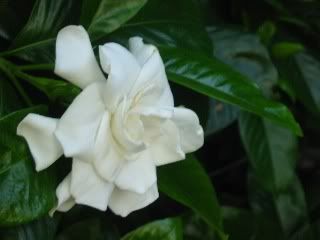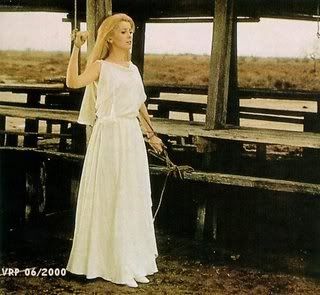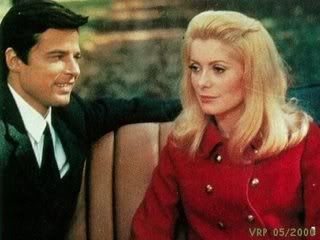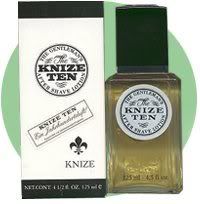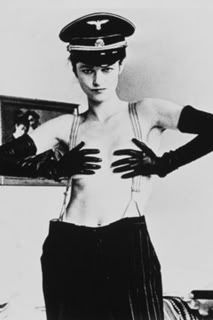
People know Andy Tauer from his marvelous perfumes (click for reviews:L'air du desert marocain, Rêverie au Jardin, Le Maroc pour elle, Lonestar Memories and Orris), his informative blog and generous sampling program for all and his completely adorable character that simply slips through everything he touches.
It was thus with great pleasure that I interviewed him for Perfume Shrine one quite evening and he kindly provided us with an insight into the fascinating world of Tauer Perfumes and his mind.
Sipping Earl Grey tea and studiously going over his replies I can see just how attentive to detail he is, yet retains some spontaneity of character that accounts for his open nature.
Alors, then!
PS: Hello Andy! Nice to chat with you.
There is something that people have been curious about and ask me from time to time. Those who have been reading your blog know that you do have another job apart from perfumery. Yet you do dedicate a large part of your time and work into creating those lovely compositions that have perfume lovers going "ahhh" all the time. What prompted you to first start up on this?
AT: Hello to you and your readers! I started making scented alcoholic solutions a couple of years ago. I call them scented alcoholic solutions because know, looking back with a smile, I would not call them perfumes anymore. My first steps into the world of perfumery were rather embarrassing; hopeless trials to make something coherent with only natural materials. Later, I was introduced to Vero Kern, my perfumery friend and body in arms. Pascal Wehrle, the shop owner of Medieval art& vie in Zurich, introduced me to her and it was the beginning of a friendship at first sight. I owe her a lot: She introduced me (me being a chemist!) to the world of synthetics. And it was she who showed me how to turn "the light on" in compositions. Pascal Wehrle on the other hand, a dear friend since close to 20 years now, was the kick starter to make a fragrance for a shop, his shop. I was unemployed in 2004, having lots of time and no job for quite a while. It was his idea to come up with a scent for his shop where he sells (among other things) Moroccan crafts. Le Maroc pour elle was my first "commercial" scent, and it was born during dinner at my place. What followed is a funny story, still developing, somewhat absurd in a sense, never really planned. I tend -regular readers of my blog know this- not to take things too seriously. This attitude helped me a lot to cope with mistakes and try the impossible. Create and produce outstanding perfumes at a reasonable price.
PS: Indeed it is so. And you have been blogging for two years! Do you find blogging on perfume to be a reward unto itself? Readers compliment your candour and your letting them glimpse into the creative process (I know I do!). For you personally, is it rewarding to share these thoughts? Do you appreciate the feedback or get ideas from readers?
AT: Looking back, it was the internet and a somewhat personal online presence in my blog that made all the difference. Again: I had no plan and started a somewhat naif blog, because I liked the idea of sharing thoughts and ideas. Later, I got to know part of the perfume lovers community and I liked the idea getting folks involved. To blog has become important for me. Sometimes, when writing about a trial and the disastrous result, I get new ideas by just writing about it. I love it when my readers comment and bring in their ideas, or wishes.
Of course, at the end of the day, I will always follow my nose and my own vision for a new fragrance. But I remember for instance Maria B.'s comment on a frankincense trial, wishing more patchouli! Which at the end turned into a new twist. Sometimes, perfume lovers comment on something that I would not have expected. For instance: I published a prototype picture of my new Lonestar Memories label for the flacon. I got -contrary to what I expected- somewhat negative comments. Thus, I
decided to come up with alternatives for the label and have folks vote on it. Finally, although I am not a native English speaker (the blog is in English), I love to write. It helps me to get along with "la condition humaine", to deal with life.
PS: Yes, I think it helps us all. Now, a question I always ask when dealing with perfumers ~ do you find that the quality of the ingredients is of lesser, equal or greater importance than the innovation or beauty of the formula? In short: could one create great art with cheap paints or great music with garbage like Stomp do, if we translate the concept in perfumery? Or is this impossible?
AT: You know~ I always use the analogy to painting. Creating fragrances is like painting with scents and molecules. Maybe this analogy is close to me because I like to paint. At least I did when I had more time. I have no doubt that you can leave a great painter for a week in the desert with nothing else than water, food, char coal and a nice flat stone to draw upon with the coal. At the end of the week you will find a masterpiece in the desert.
{At this point I find myself nodding in agreement.}
Now, to answer your question, we might want to look for another analogy: Music. The perfume formula is like the notes on a piece of paper. To make a symphony alive you need musicians and instruments. Good musicians and good instruments. The music that you hear is then the manifestation of the notes on paper and -to finish the analogy- the fragrance you smell is the materialisation of an idea, written down as formula. You need a good formula to make a good scent, coming up with the formula is the creative act. The better the formula, the more robust it is, allowing for minor quality of certain ingredients. The shorter the formula the more difficult it will be to compensate missing ingredients quality.
And then he animatedly goes on to express himself more clearly saying that a perfume formula is robust when it allows for small changes in ingredients (whether this is amounts or quality) without major changes in the detected scent quality. Therefore it MUST be robust !he stresses that~ otherwise its production would be difficult.
I have no problem understanding that. It seems logical enough: The more robust a formula is the more it will allow for individual components to be of minor quality. It seems therefore to be that a good formula allows for minor quality of some (not all!) ingredients. This explains some comments on niche or upscale perfumes that talk about synthetics that yet manage to smell terrific.
But then {he goes on}: Can you make a masterpiece with cheap stuff in perfumery? I don't think so. Can you make good perfumes with cheap ingredients? Yes, for sure! Can you make dreadful perfumes with the most expensive ingredients? Yes, unfortunately, yes.
PS: This is often the pitfall of many! {I laugh}
AT: Maybe one last aspect: It depends what you want to do with-let's say: Jasmine. You need it to round up edges and give a little twist, then you might use your everyday jasmine, pumped up with some synthetics. If you want your jasmine to dominate and be a shining column, holding your fragrance together, you might go for the Moroccan quality.
PS. Since you mentioned jasmine, and this is probably something that you get asked all the time: what are your favourite notes and ingredients? Do they evoke something particular for you or do they pose some technical challenge that makes them intriguing to work with?
AT: Well, I feel I change my favourite notes like my shirts. One day it is frankincense, one day vetiver or okoumal. But I have my notes I always come back to. I love my woods, and I love my rose and ..jasmine. When composing I always try to integrate new notes, and while doing so I learn how to master them. But like for every perfumer things boil often down to the usual suspects. And I must admit: I still love my naturals. These natural extracts are so inspiring. One day you snifffrankincense and you discover the terpene like citrus line. One day it is the hint of a tar note. I often get natural oils and absolutes and concretes, knowing that I will never build them into a scent, but I use them for inspiration.
There are, however, a few scents that I hardly ever work with: Styralyl acetate is one of them. I just don't like it. Thus, I skip it. I know it, but I don't use it.
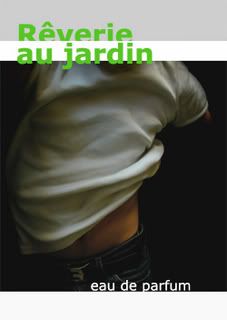
PS: Can't blame you! It's hard to work with something one doesn't like. Regarding composition: Do you have some prototype in your head when composing? Or do you go along with what your nose is telling you to do? I have read about how Jean Claude Ellena is never testing things in the lab, but just pops his notebook out of his pocket and writes down ideas of accords and percentages and ratios of molecules and ingredients and then gets the assistants at the studio do the mods. Do you find yourself distanced from such a practice or not and why?
AT: Sometimes I wished I had an assistant, a busy bee, mixing what comes out of
my head, like Mr. Elena and most perfumers have. Well, I have not and there are advantages. It helps you staying close to the matiere premiere, the molecules and naturals. I usually start by thinking. How to reach a certain idea. I then sit in front of the computer, type in the formula in Excel, that does some calculations and tells me for IFRA restricted ingredients where the limits are and then I print it out and start to mix. While doing so I sniff. Often I follow the Excel formula blindly and start modifying once I have the mixed soup in front of my nose. But, when mixing, I allow myself to also follow my instinct or intuition and change things on the go. Usually, when done, I add a little drop on my hand, because I am impatient, to learn how the scent develops on the skin. But as I use a lot of naturals in my compositions, I must allow my soups to mature for at least two weeks before I can tell how a new mixture behaves. That's why things need time in perfumery.
At this point I interrupt to revert to the recent IFRA restrictions that have plagued the perfume world with dismay and raised so many questions.
He wants to be fair. He clarifies obligingly.
AT: Here, we need to cool down and look at IFRA (and other regulating bodies) in an open minded and in a fair way. I feel a lot of missunderstandings are around. Let me use an example: Oakmoss extracts.
If you want to sell perfumes in the EU countries, you have to label oakmoss
extracts, if the amount of oakmoss is beyond a threshold. There is no way around it. But you are free to use as much oakmoss as you would like in your fragrances! Thus, for us niche perfumers, this means a lot of freedom. I think this makes sense. It allows consumers who are sensitive or allergic to oakmoss extracts to make a decision based on facts. I want my customers to be able to make this decision. Most consumers do not worry about these declarations because they are not sensitive. And, because many EU label compound are present in naturals (like linalool), in a sense, a long EU declaration is almost a sign of quality! Contrary IFRA (IFRA LINK) the International Fragrance Organization: If you follow IFRA's recommendations you should not use more than 0.1% oakmoss extracts in your fragrance. Right now this is considered a safe level, at which no sensitizing happens. Now, this is a pity, of course!, and many of the big classics used oakmoss at higher concentrations. What to do now? If a perfumer does not want to follow IFRA's recommendation: He or she is totally free to do so. There is no law binding us niche perfumers to follow IFRA. I tend to follow the IFRA recommendations, because most make very much sense to me; most of them consider toxic, cancerogenic or sensitizing compounds. And so far, I have not reached a limit in expressing myself. Later, this might change, because IFRA is very much guided by big companies, having specific needs that are less important for niche perfumery.
This is very enlightening and encouraging at the same time I have to admit to him.
PS: From your own creations, is there one that holds your heart above the others? Why?/why not?
AT:There is one baby I love the most: L'air du desert marocain. I love it on the W.-factor (my friend), and I still admire the composition. I find it really well done and others seem to find this, too. So far, L'air du desert marocain is the best seller. Maybe I love it for this reason, too!
PS: {laughing} Touchee!! What are the iconic perfumes that made you dream and which are the ones you admire youself?
AT: I love the classics and also some exceptions. One of my favourites is Knize Ten, a leather fragrance with a perfect composition. Then there are the good old Guerlains, or Carons. One exception is Series Red, Palisander from Comme des Garcons. I love it for somewhat unclear reasons! Most of the stuff that comes out these days on a weekly basis, I find not good, I must admit. Hence, I have a little bit given up sniffing these new editions. I rather focus on my Jicky and try to learn there.
PS: Is Eau d'Epices you informed us on your blog the only new perfume to expect for now or are you toying with other things as well?
AT: Well..... Honest answer? I do not know. I have my doubts. The W.-factor, my friend, tells me to go forward with the Eau d'epices. But time will tell. I have not made my mind up. There is no need to hurry things. There are a few fragrances in work, either in batch mode or rather actively. Two of the almost finished scents are the hyacinth/mechanic and the frankincense. But again: No hurry. I like to let my fragrance prototype sit for a while. And then, after a few months, I look at them again and make up my mind.
PS: Glad we cleared that up. So...aces up your sleeve! And your plans for the line in the future? Regarding additions, possible limited editions, distribution and positioning?
AT: My plans are very specific as far as my time is concerned that I devote to perfumery and building the business. By end of October I will reduce my other "normal" job. With more time at hand I want to follow some ideas as far as distribution channels are concerned. (And I want from time to time a free weekend..) But very carefully. I do not want to be present in too many places and I have a set of excellent distributors right now. But a perfumery here and there might not harm. About adding more fragrances to my portfolio.Hmmmm...... Sure there will come more. Sooner or later. But -as mentioned before- there is time. If I think of L'air du desert marocain and my zero marketing so far, then I feel that there is a huge untapped potential. Of course, it is fun to create perfumes and then think about labels and packaging. And bringing a new scent to the market is really exciting. But from a business point of view, I should not forget my babies that are sitting on the shelf already.
We stop here this interesting discussion with the promise to catch up when his Eau d'epices is finally out.(Of which I have been privy of testing and I can tell you dear readers, he has another hit on his hands! But more later on!).
I can safely say that knowing a little of Andy Tauer has been great and it was very rewarding talking to him. I just hope he is as satisfied from this glimpse into his world as we are. Thanks Andy!
Pic of Andy Tauer by himself.
Pic of Flyer for Reverie au jardin by Andy Tauer
.jpg)

